by: Peter Agenga November 25th, 2020 comments:
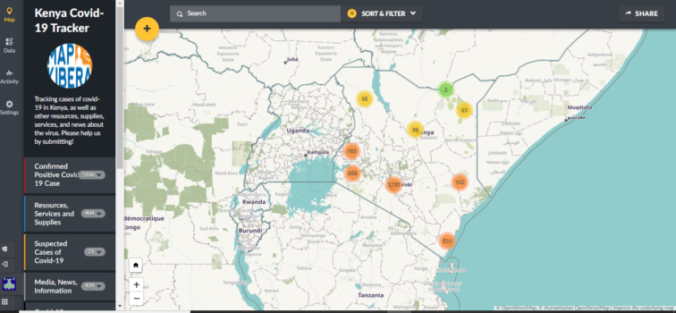
The Kenya covid tracker main page, with map showing distribution of cases, resources and other posts
2020 has been a unique year owing to the fact that the whole world was brought to a stand-still by a global pandemic. Kibera and other informal settlements of Nairobi weren’t spared either. Most of the Kibera residents work as casual labourers and due to the regulations set up by the government, the majority of the residents lost their jobs while some had to shut down their business. This left most of them having to rely on well wishers for any form of support.
In response to this, many organizations came up with initiatives to support the community; this varied from sensitization activities, food and soap distributions, setting up hand wash points and other relevant resources. Map Kibera, having worked with these organizations in other events and activities, partnered with them to:
- Map out their activities and post them on the Ushahidi-based Kenya Covid-19 tracker; this included training them on how to post their work and offering support in posting them where necessary.
- Directly support the programmes they were implementing on the ground.
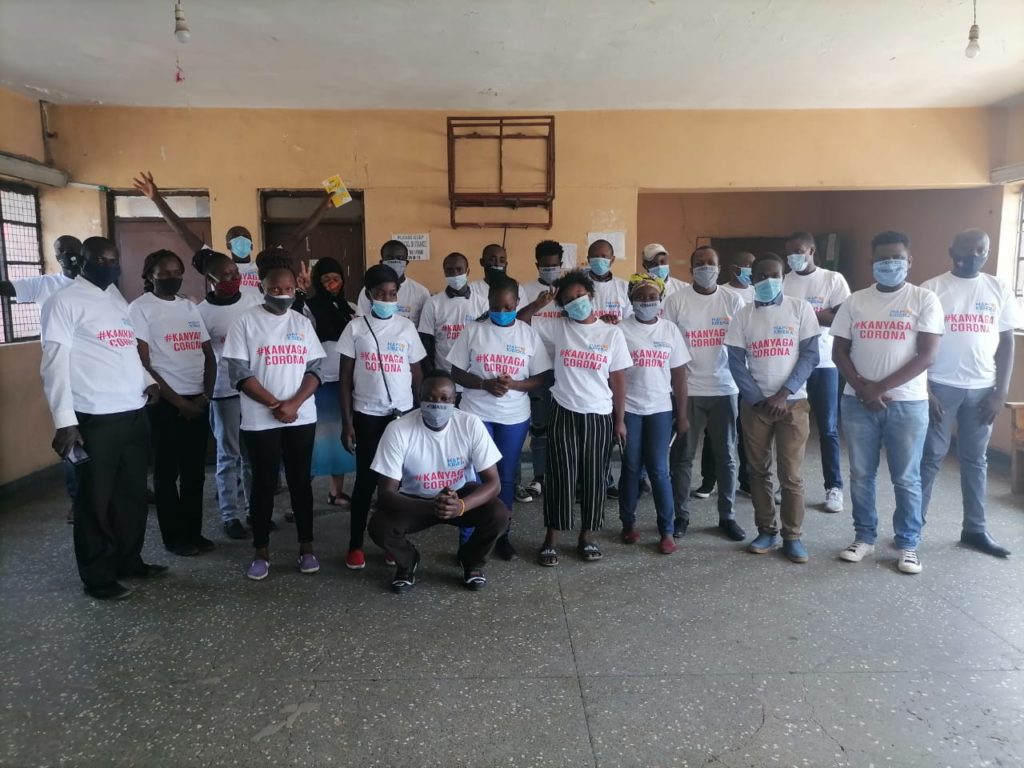
A group photo with representatives of different organizations in Mathare.
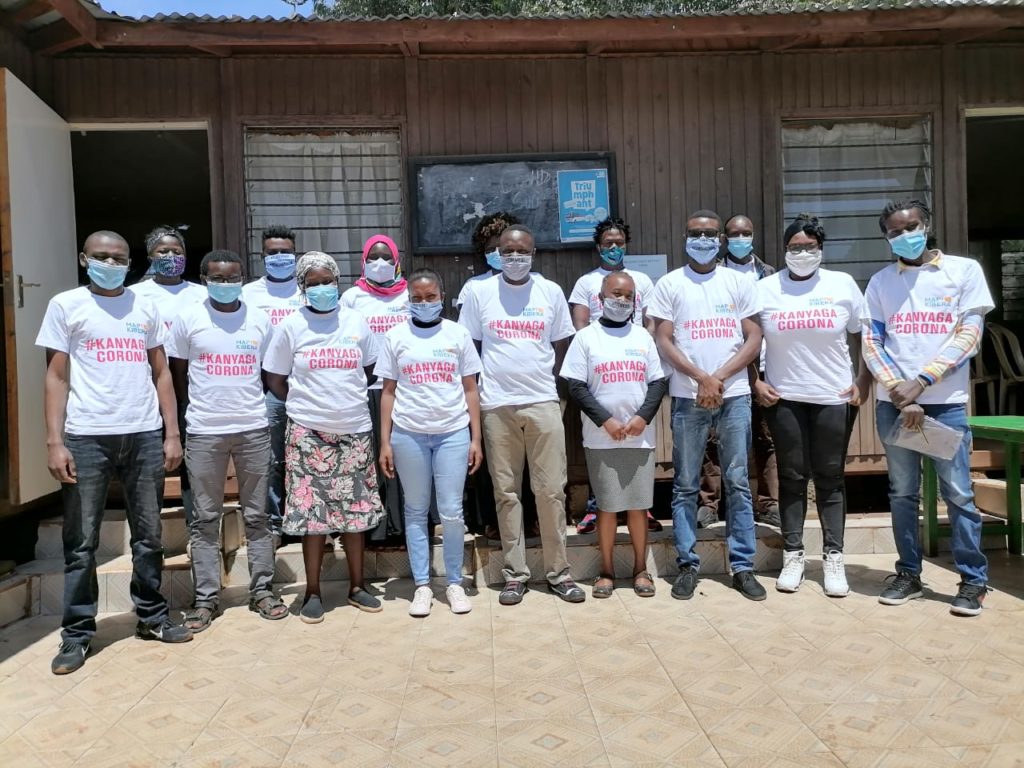
A group photo with representatives of different organizations in Kiber
Mid this year Map Kibera was awarded the 2020 Rapid response Micro-grant funds by Humanitarian OpenStreetMap Team (HOT) to support our Ushahidi deployment. We created the site for tracking Covid-19 cases, resources and news related to Covid-19 —primarily in Kibera as well as the other informal settlements of Nairobi, but also other parts of country. The goal was to keep this information together in one easy place, allowing people to see what is going on around them that might be relevant to them. This was also to aid in our efforts to keep Kibera, one of the most vulnerable communities to illness, healthy during this pandemic.Â
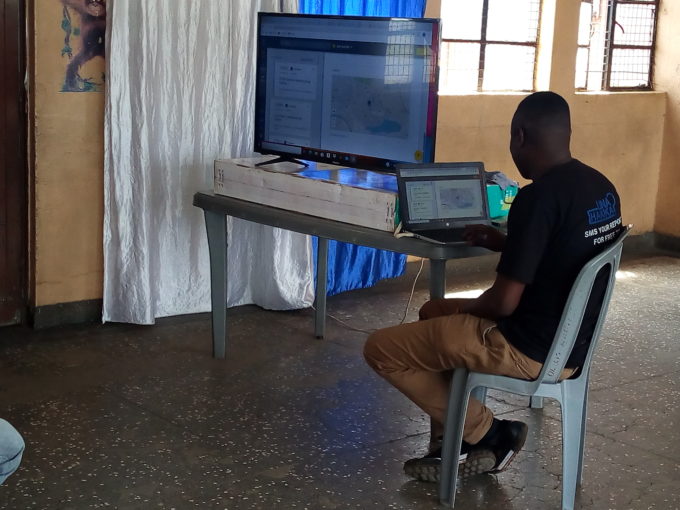
Joshua doing a live demo of how the Kenya Covid Tracker platform works
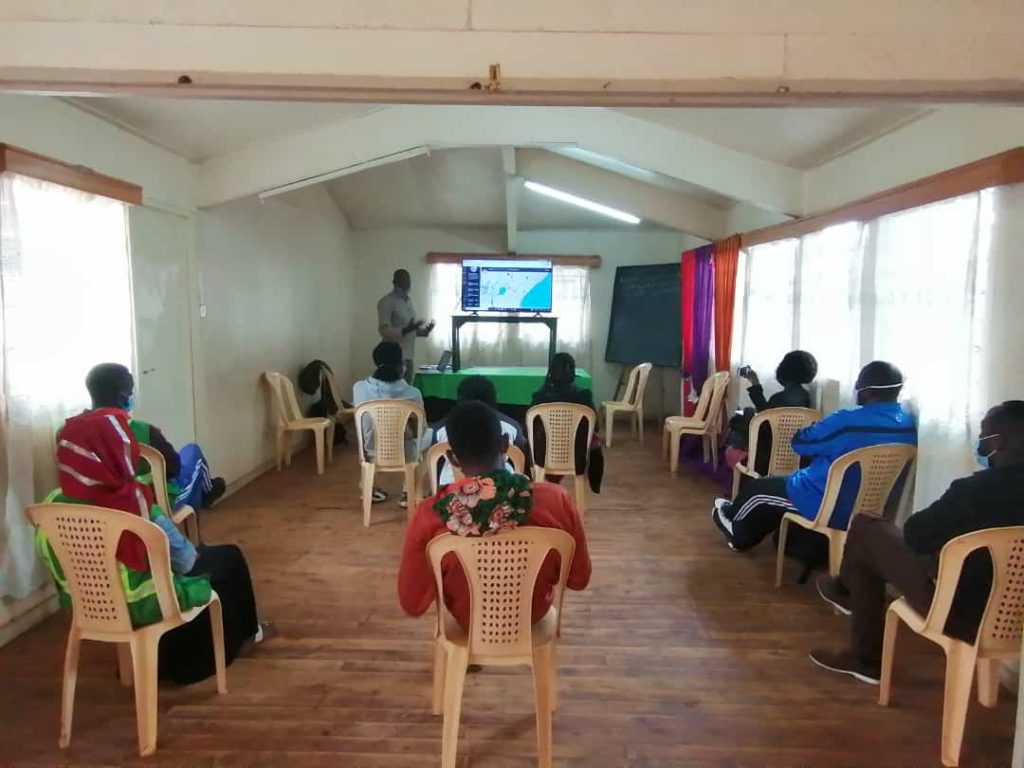
Joshua introducing the project to the team from different organizations in Kibera
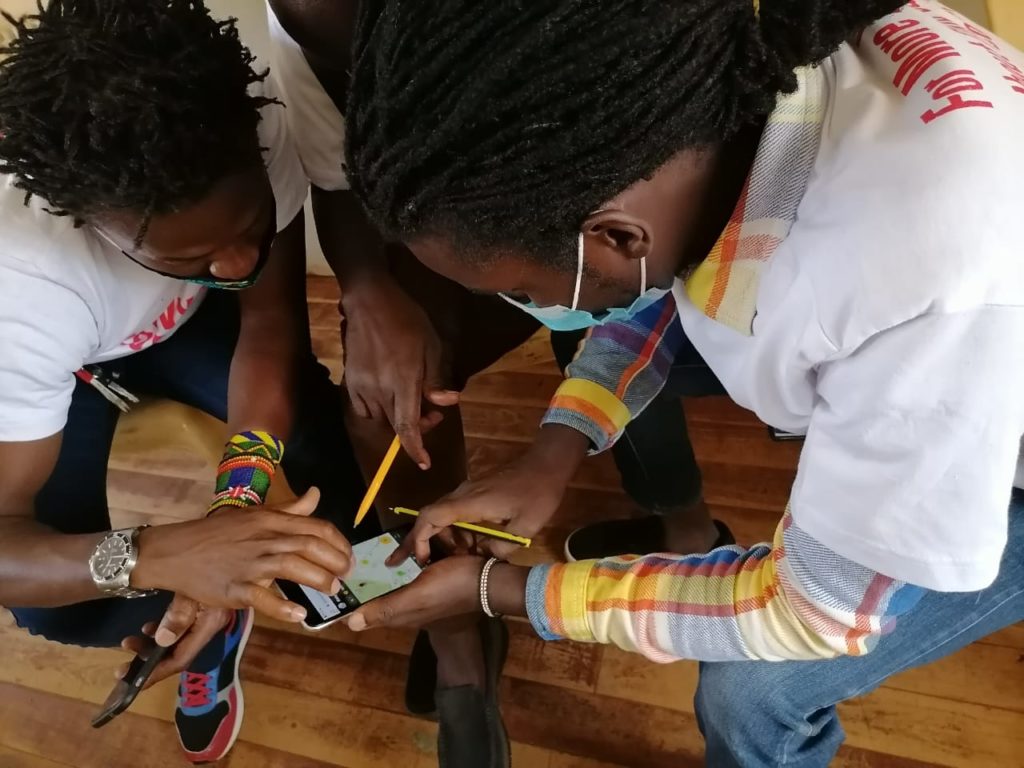
Some of the participants testing how to add posts on the Ushahidi platform using their mobile phones.
The team had already started working remotely, and therefore made use of the online tools for accomplishing the mapping tasks involved in the project. The team used tools like Maps.Me, healthsites.io, and of course OpenStreetMap to work on all the mapping tasks that were agreed upon. The initial training was conducted in form of webinars through Zoom and Google Meet; this was because of government directives on safe distancing to prevent the spread of the coronavirus. As the tools mentioned above suggest, the goals of the mapping activity were the following:
- To train community volunteers on how to add and edit information remotely on OpenStreetMap
- To ensure timely and accurate health data on OpenStreetMap
- To improve coverage of maps on health in the country (especially on informal-settlements)
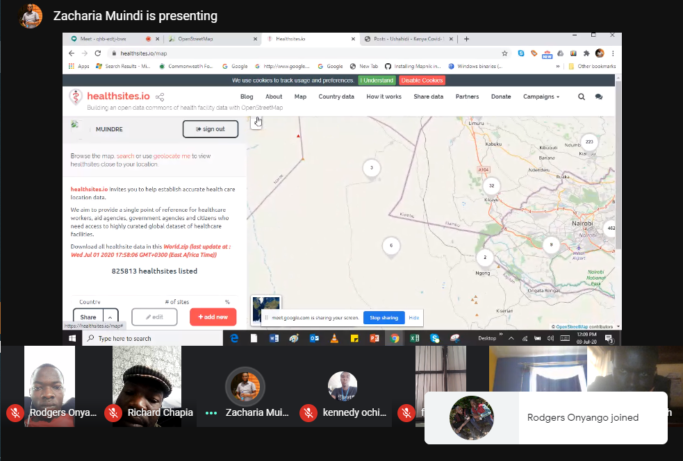
Screenshot of one of the webinars we hosted
Â
Amidst the pandemic, one unique thing that has prevailed is how resilient we can be as humans. In Kibera, our news team KNN captured a story of a lady who used donations given to her to start a business, hence having a more sustainable means of supporting her family.All these various activities have enabled the organization to achieve new milestones with regards to Open Data. Since map data is dynamic, the Map Kibera team has been able to create new data, and update already existing data. One way has been through data import; around June, we worked closely with UN Habitat by assisting them to mobilize youths from Kibera who we have engaged previously in some of our mapping activities. The exercise saw the team collect basic information about specific features in Kibera relevant to the Covid pandemic. After the exercise, we uploaded this open data into OSM. Considering Map Kibera has done extensive mapping in the area, we needed to ensure there were no duplicates, and if the feature had already been mapped, to update the feature with the new data. The data import process has been documented on wiki. So far we have managed to add and update over 1400 features on OSM in Kibera and Mathare. Later on UN Habitat shared more data with us to import, this saw us cover new areas such as Kawangware and Kisumu (the import for the two new locations is still ongoing).
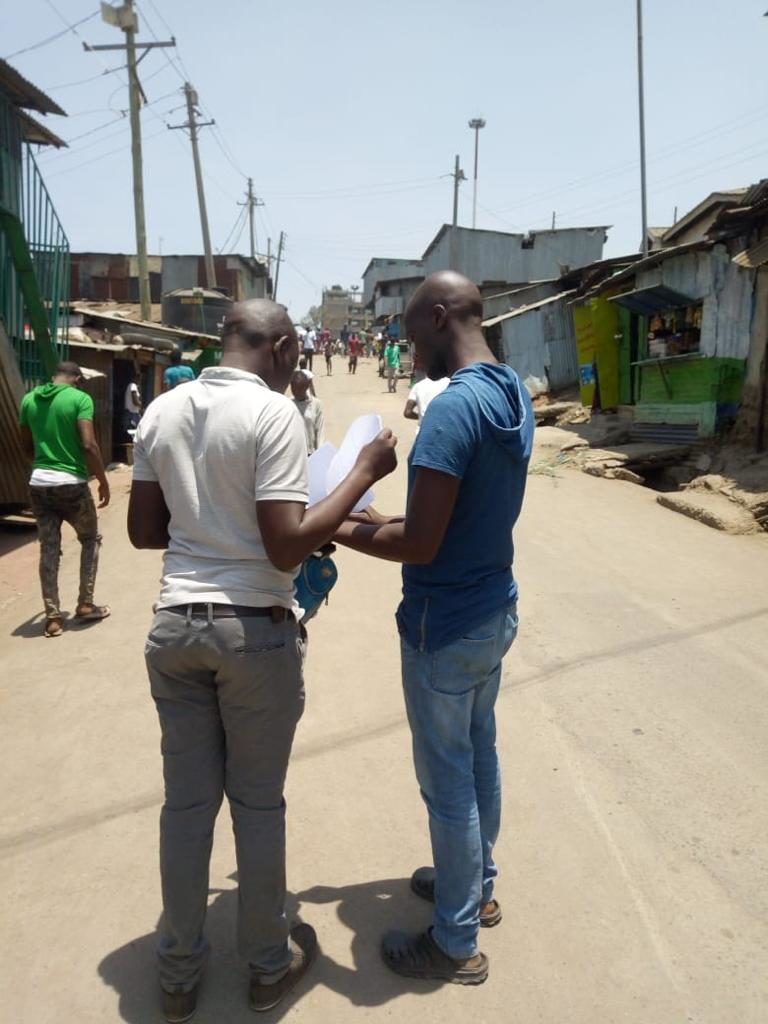
Our team members from Mathare while on the field to cross-check and verify the data that was imported and checking for any extra information that was not captured.
We also have recently trained more community ambassadors on the use of various mapping platforms that are freely available and accessible to the public. This wouldn’t be easy to achieve without the financial and moral support from HOT and all the parties that were involved in the Micro-grant Program.
by: Erica April 10th, 2020 comments:
Please help Map Kibera’s Covid-19 efforts by donating now via Global Giving! 
As cases of coronavirus continue to mount in Kenya, Map Kibera has launched the Kenya Covid-19 Tracker. The tracker uses Ushahidi’s platform to track cases throughout the country, related news, and key initiatives underway to help citizens. Map Kibera has details on many Kibera-related resources, and is working with other organizations to include country-wide efforts to help prevent the spread of the virus and address hardships of the social restrictions.Â
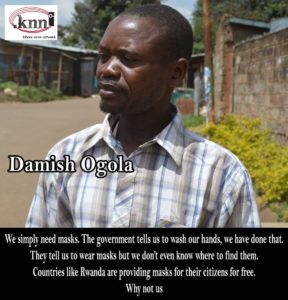 Meanwhile, the Kibera News Network team has several initiatives underway:
Meanwhile, the Kibera News Network team has several initiatives underway:
- Covering the pandemic’s effects on video, and how it is affecting people in Kibera;
- Sharing out information and dispelling rumors via their WhatsApp broadcast group (to join, save +254794590404 to your phone and type us your name). Residents are asking questions to KNN about the virus, and KNN shares out daily updates on case tallies and latest government initiatives, health advice, resources, etc.
- A new Humans of Kibera series with opinions and quotes from people about Covid.
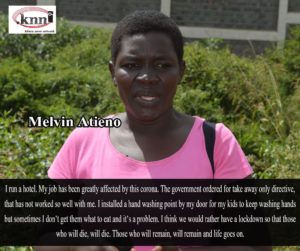
Using the Covid Tracker, Map Kibera and the KNN team are mapping not only new Covid-19 cases daily, but also work that organizations and individuals throughout the country are doing to try to help during this outbreak, like distributing food and face masks, setting up hand-washing stations, and more. Initiative leaders can also submit their own posts about what they are doing. Map Kibera is additionally mapping news items related to the virus, like articles from major new sources and tweets and social media. We are verifying all posts.
We want organizations to share their own work too using our tracker. Several Kenyan organizations are already using it to map their own work. Click here to share a resource with us!
We’ve set up a Global Giving fundraising page for these efforts. Please check it out here and support us if you can!
by: Lucy Fondo March 11th, 2020 comments:
To mark the International Open Data Day, Map Kibera, on Saturday 7th March, took the initiative of hosting a half day forum in order to discuss Open Data with partner organizations, community leaders and members not only from Kibera but the larger Nairobi area. The aim of the event was to try and simplify the concept of open data to the grassroots level, and further promote the use of open data among the community members in order to promote data driven development.
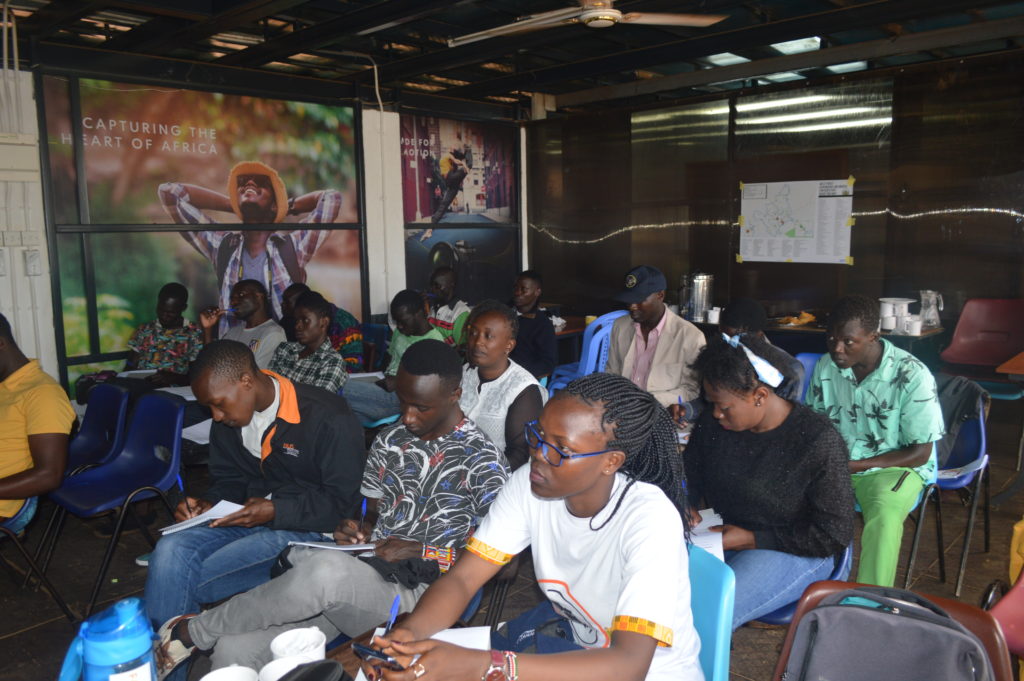
Participants following up on the session keenly
The event kicked off with Zack Wambua, who is Mapping Coordinator at Map Kibera, talking about the importance of Open Data. He highlighted examples of Open Data and the importance of having open data such as giving clear information and containing rumors and making data accessible and reachable.
Sharon Omojah represented OSM (Open Street Map) Kenya and explained to those who had attended what OSM Kenya is and the work it does. She gave an example of the Mapathon as one of OSM Kenya activities. She also explained the benefits of being a member of OpenStreetMap as more questions were asked about OSM Kenya mission and whether trainees were awarded certificates after OSM trainings. She stated that the OSM Kenya mission is to have an updated map of Kenya and yes, certificates are awarded after trainings.
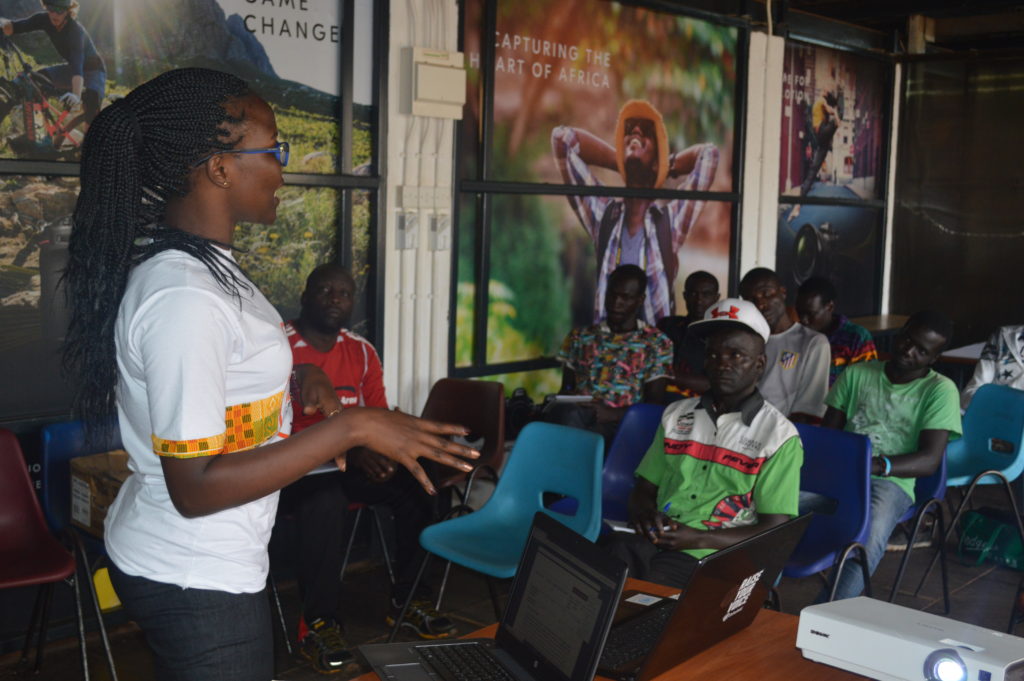
Sharon presenting about OSM Kenya.
Zack Wambua took the attendees through how Map Kibera started. He explained Kibera was just a blank sport on the government map and there was need to have a detailed map of Kibera to show that there’s life in Kibera, and that’s where Map Kibera stepped in to provide the first map of Kibera, which has since been reproduced thematically. Map Kibera uses OpenStreetMap because it is open and accessible.
Zack talked about Open Schools Kenya, how it can be accessed and the information one can find when searching for a particular school from the website. People could see an example of a printed Open Schools map on the wall. There was a suggestion to map the Kibera population which has been a controversial issue for long.
The attendees also watched a small video done in Kibera asking people on the street about what they know about Open Data. Zack led a small exercise on what people had learnt from the video and what they thought of the answers given on Open Data.
There was a breakout session where the forum split into 3 groups to discuss the Open Data rising questions among them, why there weren’t many people who have attended Open Data forums. Most of the audience had an idea of what open data entails and even went ahead to share some of their experiences like accessing census data, and the country’s financial budget among others.
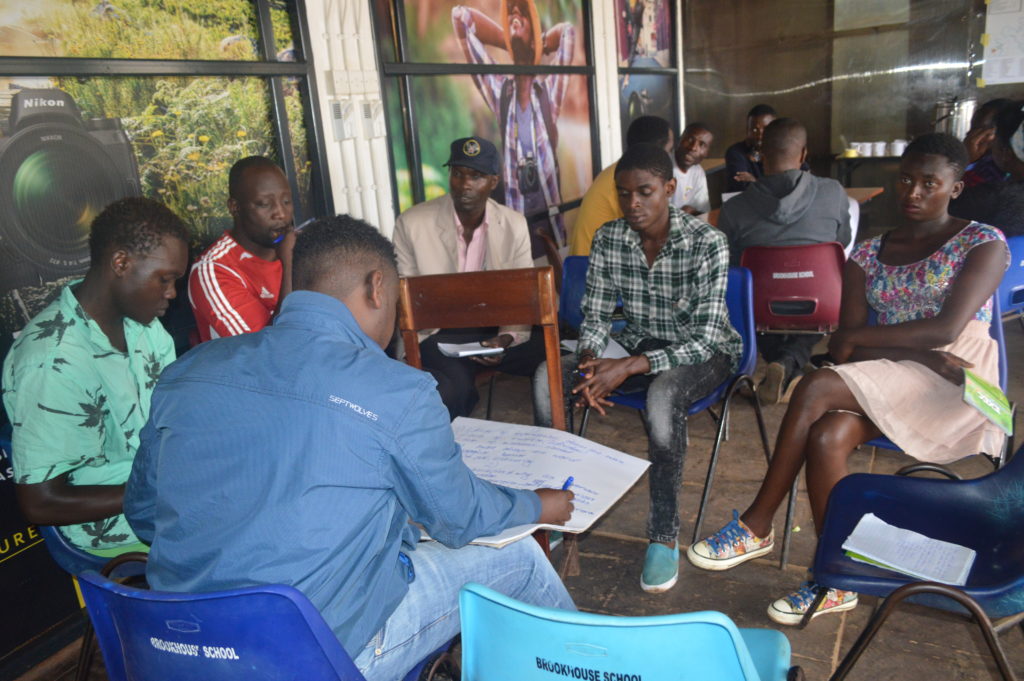
One of the group discussing about open data, during the breakout sessions
Discussions followed on the benefits of open data and accessibility, where we had an example of how Kenya Urban Roads Authority had hid the data of possible people to be displaced by the road cutting through Kibera.
The last session of the day was led by Lucy, where she introduced the participants to Maps.Me and OpenStreetMap. She did a step by step demonstration of how to map new points as well as how to upload them to OpenStreetmap. Majority of the participants were excited that they can now be able to add new map features of their neighborhood. Since this an extensive course, there was a request that Map Kibera should organize more training on open mapping of which most participants have already registered for it.
Among the recommendations were organizing for more sensitization forums and further defining open data in a simpler way that can be understood by ordinary citizens. There is also is a need to conduct more training on open data platforms in order to promote open data in the community.












